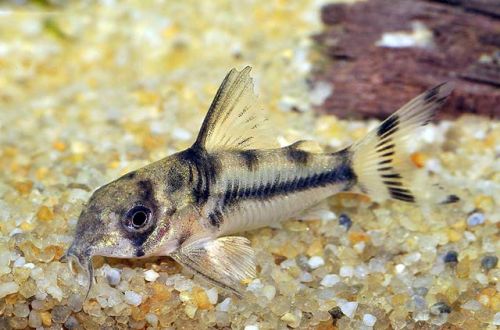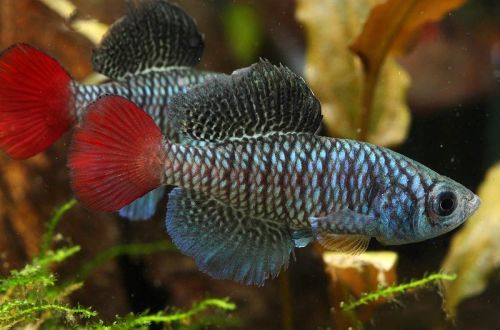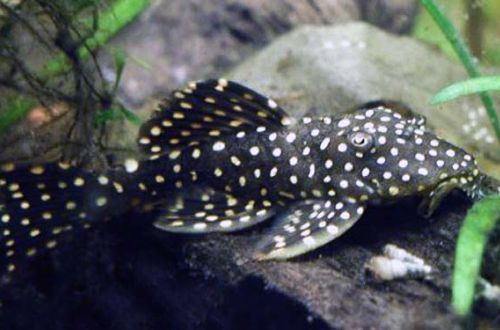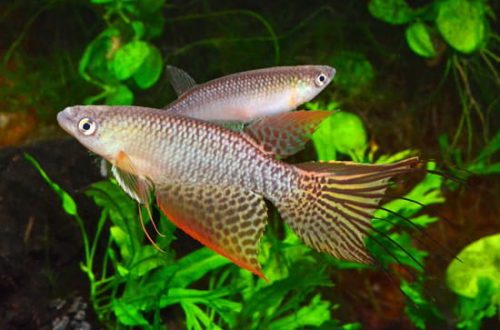
Boesman Corridor
Boesman’s Corydoras, scientific name Corydoras boesemani, belongs to the family Callichthyidae (Papace or callicht catfishes). The fish is named after Dr. Markus Boesman, who collected most of the type series. The catfish hails from South America, where it inhabits the Suriname River basin, which is the natural border between the country of the same name, Suriname, and French Guiana. It is found in shallow sections of rivers flowing among tropical rainforest. A typical biotope is a stream with sandy, silty substrates and numerous plant debris (branches, roots, fallen leaves).

Contents
Description
Adult individuals reach a length of about 4 cm. The color is light with a pattern of a dark horizontal strip along the side strip and black spots. At a certain angle of incidence of light, golden hues appear.
Brief information:
- The volume of the aquarium – from 80 liters.
- Temperature – 21-28°C
- Value pH — 5.5–7.5
- Water hardness – soft (1-10 dGH)
- Substrate type – sand or gravel
- Lighting – moderate or bright
- Brackish water – no
- Water movement – light or moderate
- The size of the fish is about 4 cm.
- Food – any sinking food
- Temperament – peaceful
- Keeping in a group of 4-6 fish
Maintenance and care
If the catfish is a descendant of the already acclimatized Boesman Corridors, then it will not impose special requirements on its maintenance and aquarium maintenance similar to most other freshwater fish. It is enough to provide soft slightly acidic warm water and prevent the accumulation of organic waste. If the catfish is exported from America, then it is likely that it was caught from the wild. In this case, it will be sensitive to the conditions of keeping in terms of the hydrochemical composition of water, which should recreate the natural habitat as accurately as possible.
Food. Will accept most popular foods used in the aquarium trade. It is advisable to serve sinking foods of a suitable size.
behavior and compatibility. It has a calm peaceful disposition. Prefers to be in a group of 4-6 individuals. He gets along well with other fish of similar size, provided that he is not aggressive and not territorial.





